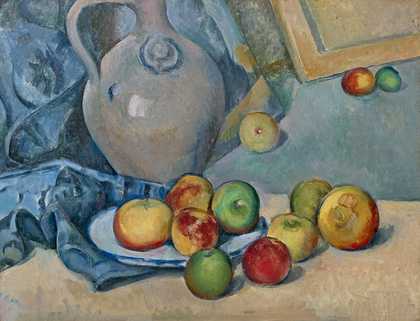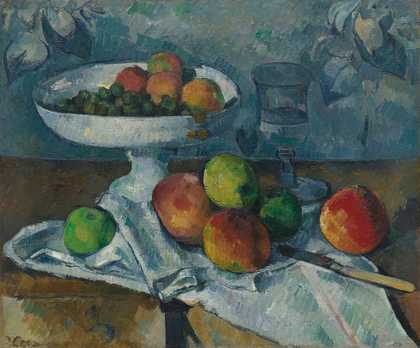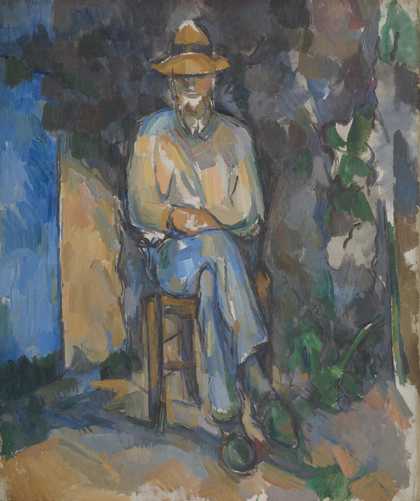Paul Cezanne was born in 1839 in Aix-en Province, a city in the south of France surrounded by hills and the countryside. He lived through a time of extreme social and artistic change, and his art bridged this shift from tradition to modernity.
The way he challenged existing ideas of beauty, colour and how to paint went on to inspire a generation of younger artists.
The history of painting would never be the same again.
In 1861, 22 year old Cezanne quit law school and moved to Paris to study art. The capital was a world away from his hometown and in the middle of a turbulent transformation. There was rapidly growing industry and new social conventions for women, as well as widespread poverty, violence and discrimination.
Cezanne tried to capture it all. In Paris, he met other ambitious young artists who also wanted to reflect the world they lived in through their art. Among them were Claude Monet, Pierre-August Renoir and Camille Pissarro.
They made portraits, landscapes and scenes both real and imaginary that alluded to what was happening in France at the time. This later became known as the Impressionist Revolution.
At the start of his career, Cezanne’s paints were so thick that one art critic said ‘they could have been shot out of a pistol’. He tried to set himself apart from the fashionable, Metropolitan artists in Paris whose paintings were championed by the prestigious Salon Exhibition.
He said ‘the others see and feel like me, but they do not dare. Me, I dare. I have the courage of my convictions.’
In 1870, France went to war with Prussia. Cezanne and his partner Marie-Hortense Fiquet fled to L’Estaque, a village on the coast in the south of France. They had met a year earlier in Paris and defied middle-class conventions by living together outside of marriage.
Fiquet became one of Cezanne's favourite models.
He rarely worked with professional life models and preferred to paint people he was close to. Their patience allowed him the time to make repeated studies, to experiment, and to hone his portraiture practice Cezanne went on to paint Fiquet nearly 30 times over 25 years, showing their continuous closeness and partnership.
In the 1870s, Cezanne often worked alongside his friend and mentor Pissarro. Pizarro helped Inspire Cezanne to develop his signature technique of considered, measured parallel brushstrokes.
Cezanne's collar palette also became lighter. He used a small range of colours but in a rich variety of shades.
He continued to travel back and forth between Paris and the south of France in his native Aix and L’Estaque. He wrote ‘the views are like a playing card. Red Roofs against the blue sea.’
These were the years when Cezanne became the Cezanne we now know.
In the 1880s and 90s, Cezanne's favourite area of experimentation was still lives featuring common household items, such as bowls, jugs, fruit and a traditional blue fabric called L’indienne.
At the time, still life was, at least traditionally, considered the least important of the art genres, but he wanted to show the art establishment
just how meaningful these modest objects could be.
‘With an apple, I will astonish Paris!’ he declared.
1899 was a defining moment in Cezanne's life. Now aged 60, he had been diagnosed with diabetes a few years earlier and was feeling increasingly frail. He decided to sell his Paris Studio contents and settle at his birthplace. Aix.
He pushed against his failing health with bursting creativity, channelling his concerns into moody, dark landscapes and ominous compositions with skulls. His technique varied from thick oils to layers of delicate, luminous watercolour washes. He continued to find new ways to paint and for the first time in his career, he made portraits of people outside of the studio.
A year after Cezanne's death in 1906, the Salon d’Autumne held an exhibition in his memory featuring more than 50 paintings and watercolours. His legacy kept growing and influenced the work of many artists.
Today he is considered an innovator as well as one of the most well-known artists of the late 19th century.






